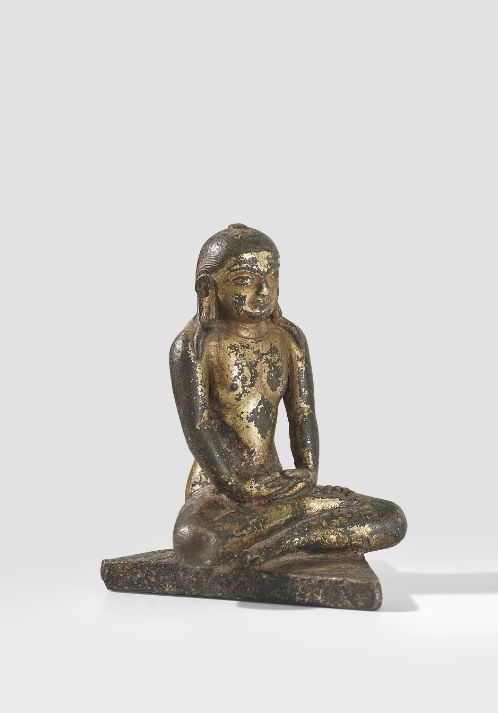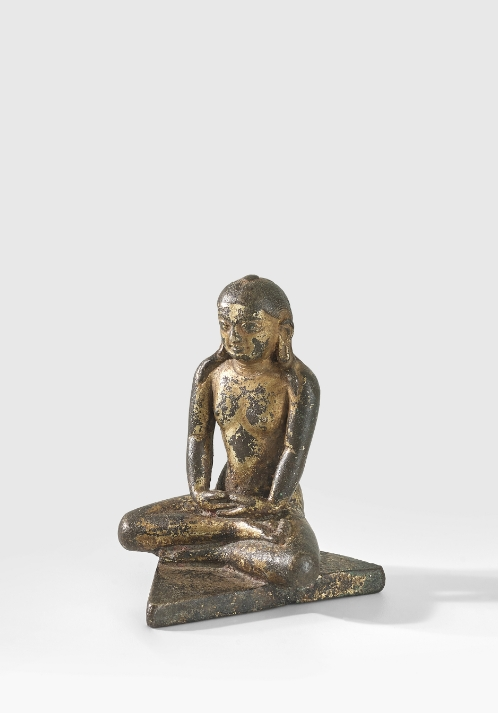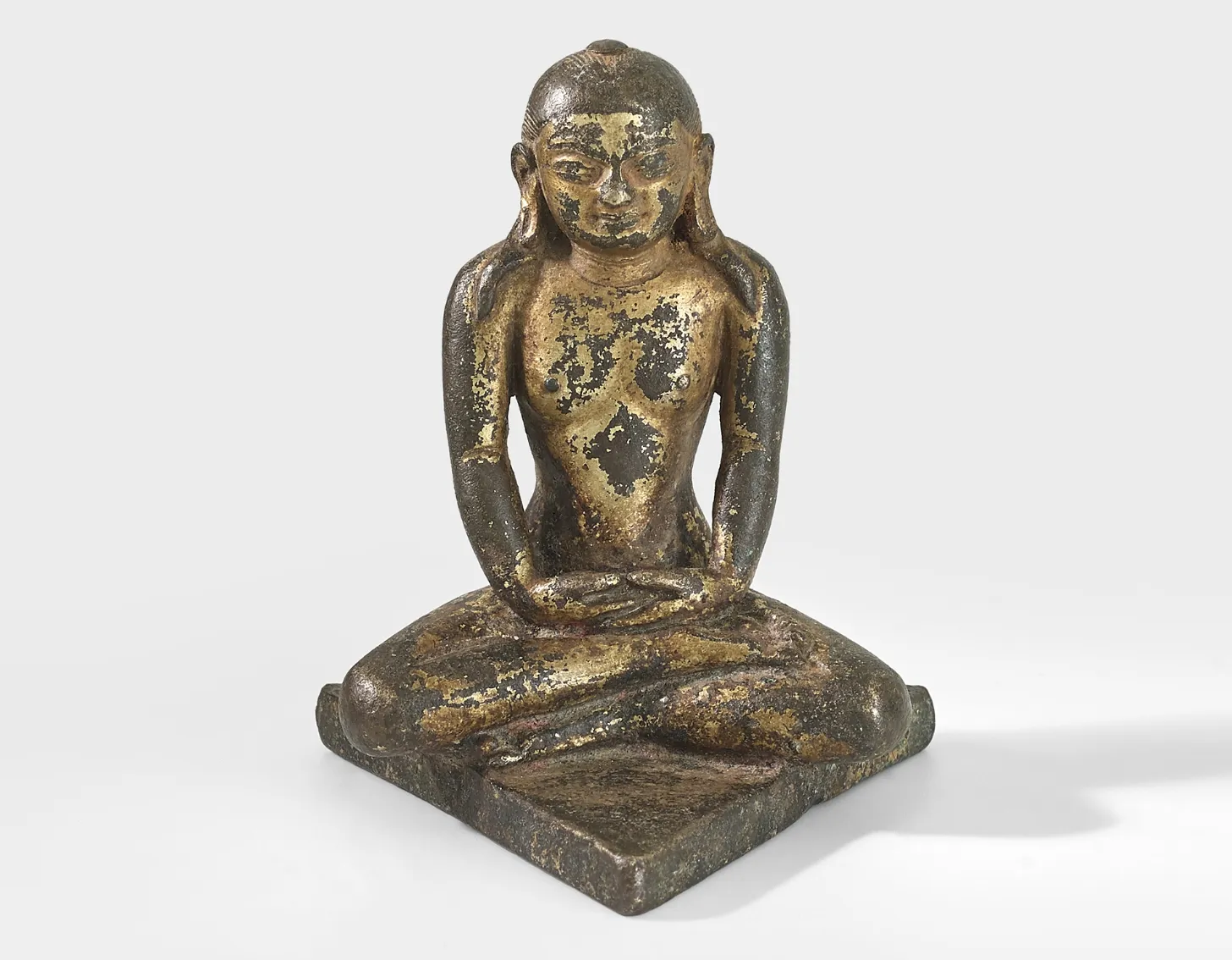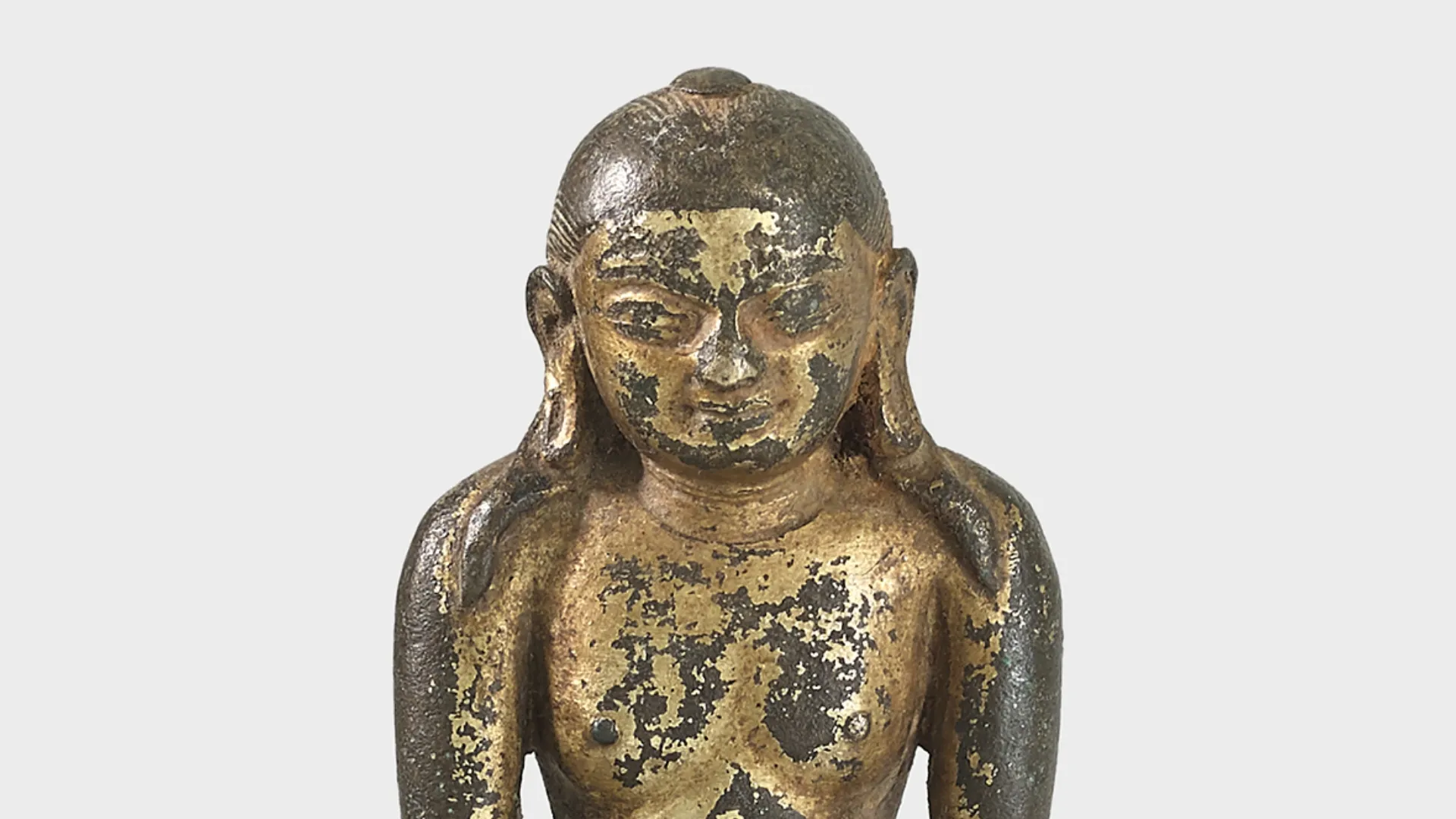Rishabha is seated in meditation. The right upturned foot is placed on the left thigh, the left leg folded below and slightly in front of the right. The shoulders are drawn forward, allowing the arms to be secured well into the lap, right hand placed on the left palm with thumbs nearly touching. This image has a small cranial protuberance (ushnisha) which is in keeping with some Jain traditions, though more commonly seen in a Buddhist context. The torso is well-defined. The back is cast as beautifully as the front. (cat. no. 7) Gilding extends to the triangular base. The figure is uncloaked, and thus was commissioned by a member of the Digambara (“Sky clad”) branch of the Jain tradition. The Digambaras believed that nudity was necessary to attain spiritual liberation, and that this path was available only to males. The other main Jain tradition, the Shvetambara (white-clad), welcomed women practitioners, and wore clothing.
There is a simplicity verging on austerity in this work that is in keeping with the restraint that characterizes the Jain path to salvation. Ahimsa, a deep prohibition against harming other sentient beings, is an all-embracing principle in the Jain tradition. This prohibition extends to insects, obliging some Jains to wear face masks in order to inadvertently inhale insects, and to use a broom when walking in order to clear the path of sentient beings that may otherwise be inadvertently trammeled as one walks. As in other religious traditions, commissioning and worshipping images are among the sanctioned paths to acquire merit.


A c. 100 BCE narrative frieze from Mathura includes the earliest surviving image of a Jina. Originally the crossbar of a gateway leading to a sacred Jain recinct, the narrative shows legendary King Rishabha at his court. Having witnessed the death of a court dancer, he recognized the futility of ordinary life, bound as it is by the endless cycle of life, death, and rebirth. The monarch renounced his crown, took up the life of a renunciate, and achieved spiritual liberation through the practice of meditation.
A hoard of Jain bronzes were unearthed at Chausa in Bihar, north India, and it is with these images that this example can be most closely compared, notably a standing figure of Rishabha dating to c. 3rd century. Also relevant is the seated Jain figure of Pushpadanta, in red sandstone from Vidisa district, Madhya Pradesh, dated to the period of Ramagupta, c. 375 CE. An exceptionally fine c. 5th-8th century copper alloy sculpture of a Jina from Bihar in the Chatterjee collection may be compared with this example in its seated posture, though regional attributes differ from this sculpture.

